Get quick, automated responses from everyone in your meeting
Microsoft Teams recently announced new polling feature during Teams meetings. It turns out they're very simple and easy to use, but also not super robust. Meeting presenters manage the questions and anyone in the meeting (presenters and attendees) can respond. There are also some limitations you'll want to be aware of as you dive into the world of meetings polls. But overall, these can be really useful for getting quick, wide-ranging answers in your everyday meetings. For a video overview of how to use polls in meetings, click play below.
Enable your meeting to use polls
Before you can create any polls in your meeting, you have to enable Microsoft Forms in the meeting itself. It looks like you'll have to do this as a pre-requisite for any meeting you want to use polls in. As of now, you cannot use polls in channel meetings. That's a big setback for a lot of people and may make polls useless for most of your meetings. If I haven't lost your interest, though, to add Forms to your meeting, you have to have a scheduled meeting and you must be a presenter (or organizer, but pretty much all organizers are presenters).
In your Teams calendar, click the meeting and click expand or Chat with participants. At the top of the meeting page, click + to create a new tab and select Forms. Follow through with any requests from the app.
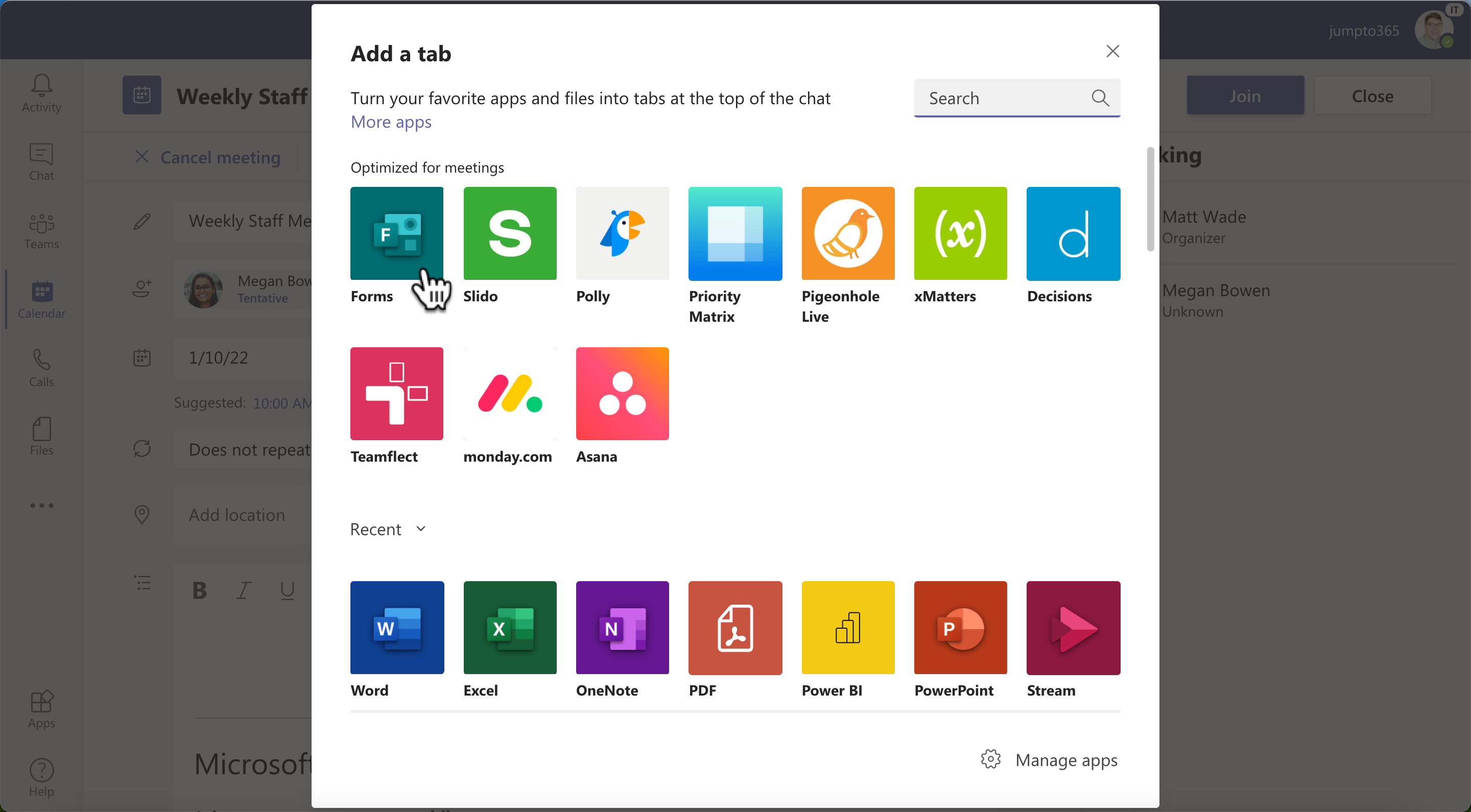
Create your polls (questions)
Once you've added Microsoft Forms to your meeting, you'll see a Polls tab and that tab will entice you to create a new poll. It's important to know that these are called "polls" for a reason. Each poll is one multiple-choice question. This is not a form from Microsoft Forms; you can't have multiple questions, you can't include fill-in responses or rating questions, and the multiple-choice does not support "other" as an option. Answers can be radio buttons (select one answer) or checkboxes (select all appropriate answers); you are limited to six answers; results can be shared with everyone while voting; and you can set all responses to be anonymous.
Go ahead and click + Create New Poll. Write your question and add in your answers. If you need more answer options, click + Add option. Remember, you're limited to six answers. If you want to allow multiple answers per person, toggle Multiple answers to be enabled.
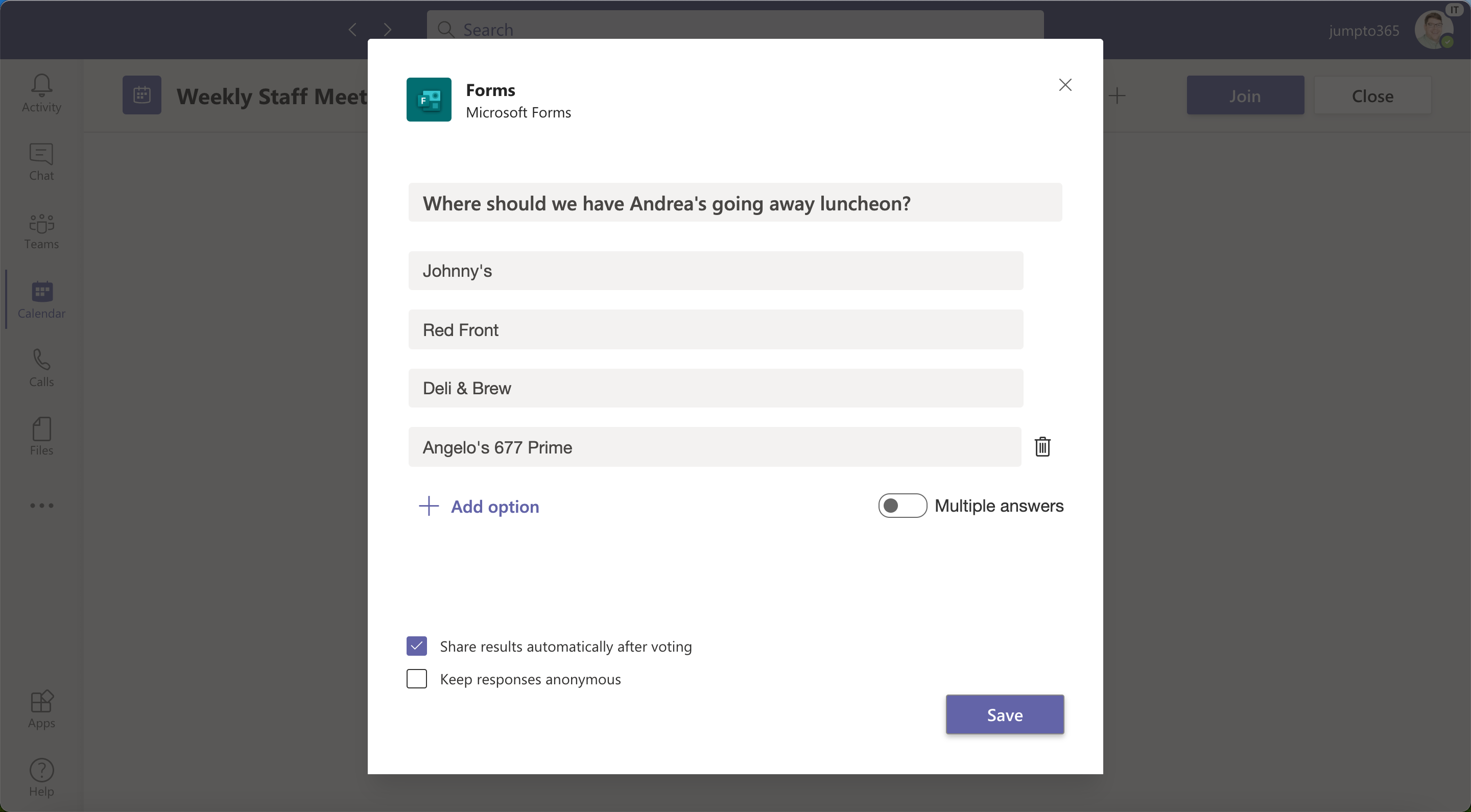
Continue creating polls ahead of your meeting. You'll see them all in the Polls tab of the meeting.
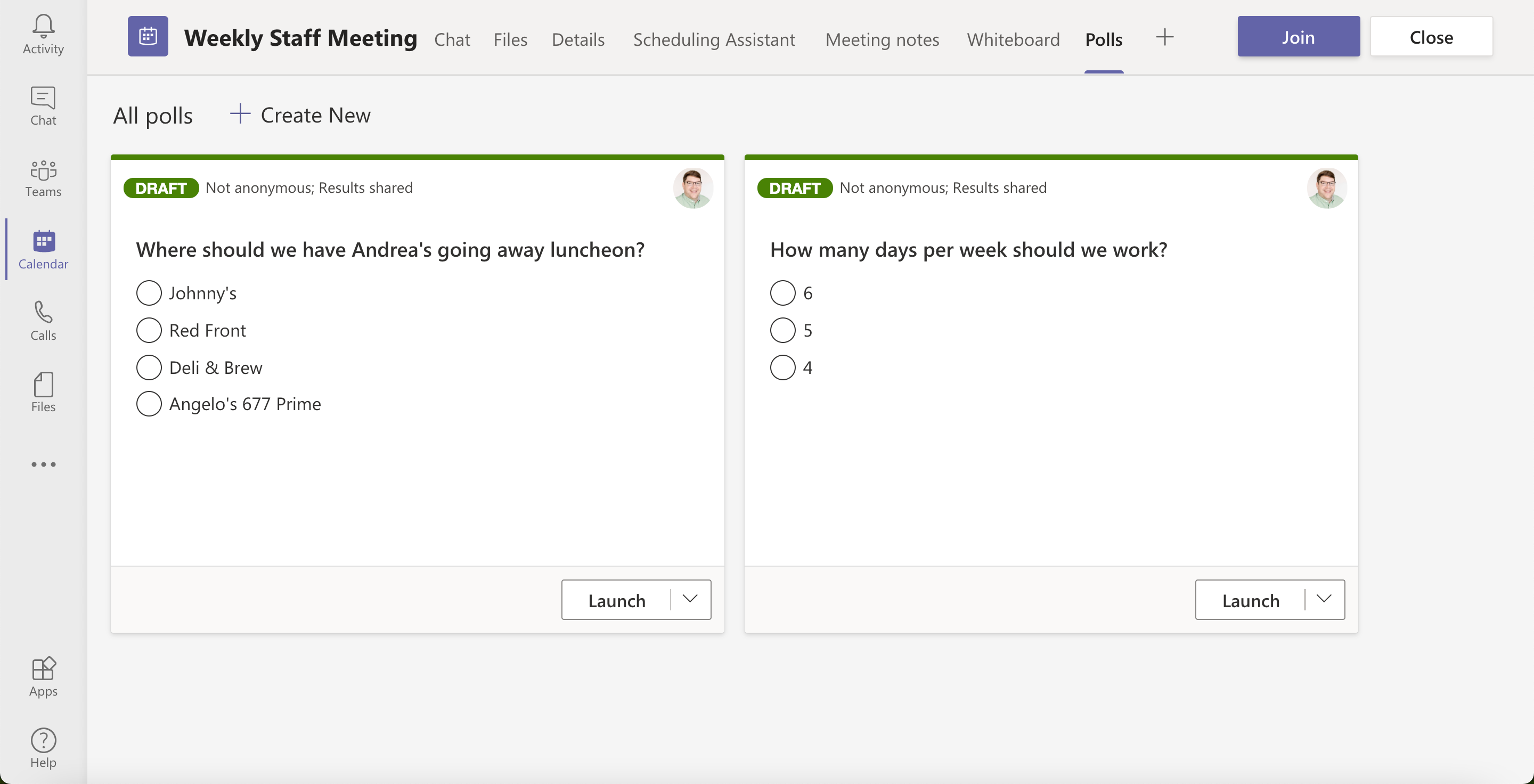
Launch and run your polls
Once in your meeting, you can launch your polls. In the meeting toolbar, click the new Microsoft Forms button, which brings up a listing of all your polls. I assume you need to be using the modern meeting experience for this to work. For each poll you can launch, edit, or delete. If you delete the poll, it is no longer available to you or anyone else in the meeting.
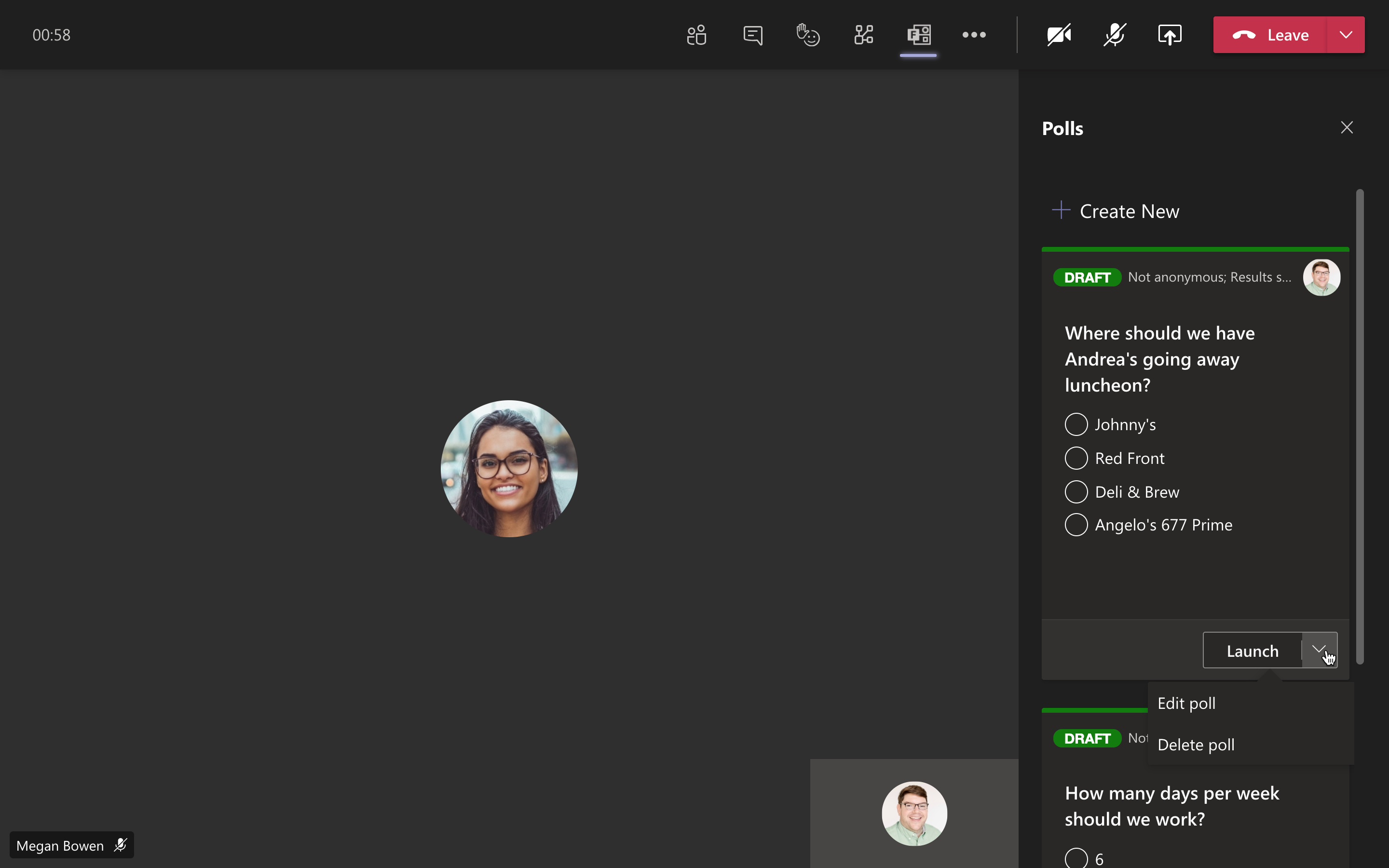
When you're ready, click Launch on your poll. You and everyone else in the meeting will see the poll. If you're on the modern meeting experience, the poll comes up in the middle of the screen and it shows the poll status as Live. If you're on the older meeting experience (for example, if you're joining on a browser or on mobile), you won't see this pop up. However, you will get a notification from the chat about the poll. In fact the Forms app will send the poll to you in the chat where you can complete the form and submit it.

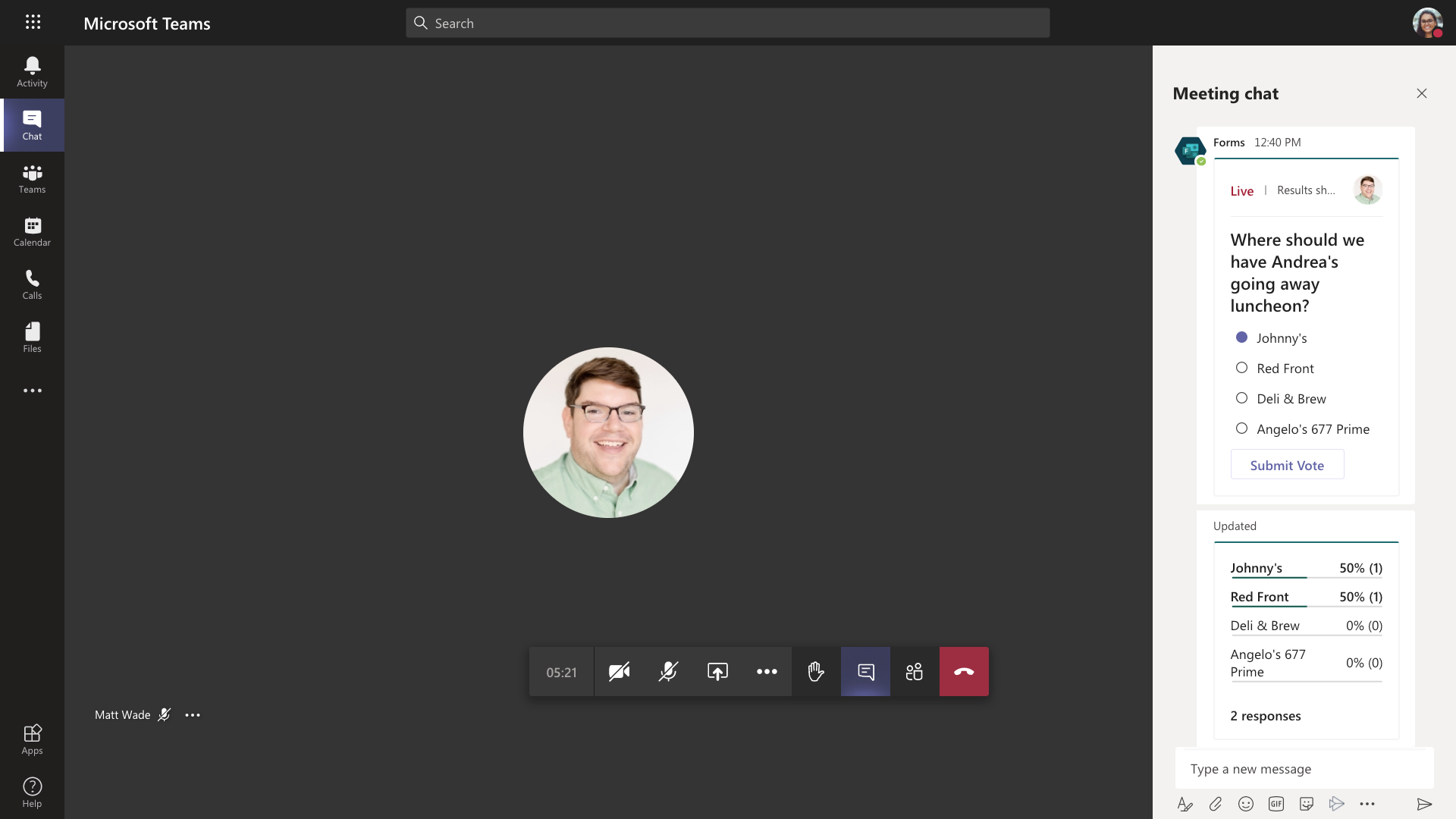
The pop-up is really slick and I like it a lot. For the situation where you can't use it (on the web or mobile), the meeting chat will suffice. It looks like they're using the new versions of adaptive cards to provide the question and the results. Everything auto-updates in situ like you would expect. However, I did notice a functionality difference between the poll pop-up and the chat card: namely that you can change your vote in the chat but you can't through the pop-up. So if you don't want people changing votes, make sure to close the poll soon after launching it.
Close a poll
Once the allotted time to answer the poll is complete, the presenter should close the poll. This solidifies the responses and keeps people who didn't answer from answering in the future and anyone who did answer from changing their answer. It also gives you a more solid report if you want to export the results, which you can do from the View options drop-down under each poll. Once the poll is closed, you'll see it labeled as such. You can always reopen a poll under the same menu if you'd like.
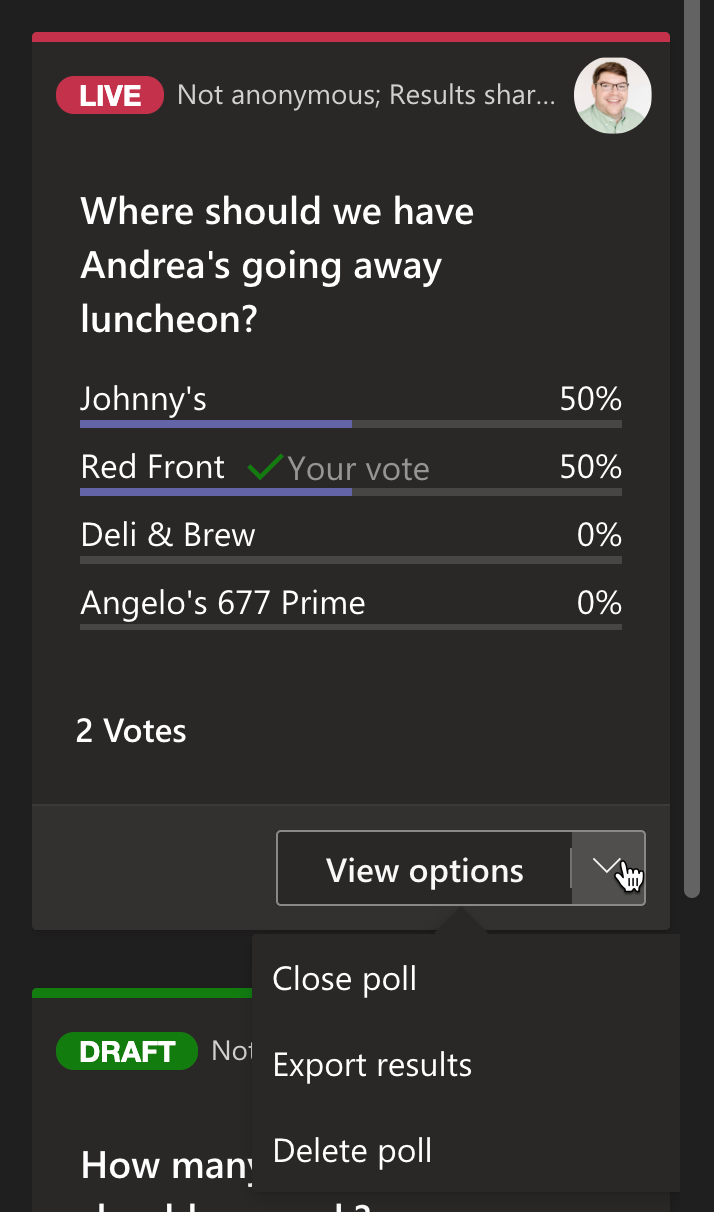
Export results
If you want to work with the data, you can export the results of each poll as an Excel file (interestingly not a csv, which I prefer, but Microsoft typically doesn't). You're provided the start time of the poll, completion time of the poll, name and email of the responder, and answer they provided. Note that there is no meeting-wide polling results export; you have to export the results for each poll, meaning each poll you do has a separate Excel file that gets downloaded.
Delete a poll
Under the View options menu, you can delete a poll, including polls that are live and have answers. If they're live, the cards in the chat will be removed and the space they took up will simply say "updated". It's basically still a dynamic card, except the content is now empty.
Drawbacks
There are some key things to watch out for here as you dive into polls. I've mentioned most of them above, but if you're not willing to read all the way through, here's a centralized list:
- Polls are not supported in channel meetings.
- Each poll is one question.
- All polls are multiple choice questions. No fill-ins, ratings, and no "other" answers. Though you can choose between radio buttons and checkboxes.
- Each poll is limited to 6 answers.
- People can change their vote using the meeting chat card (though not the modern experience poll pop-up) if the poll isn't closed.
- Results are exported poll-by-poll. There is no meeting-wide polling export.
Wrap up
Overall this is a nice feature to have in Teams. I know a lot of people have been waiting for this since Skype for Business had something similar (if not more robust) for years, so it brings Teams closer to feature parity with its ancestor. It's definitely not perfect, but it will do the job for probably 75% of the needs of most people, which is great if you ask me. The user experience is also a big win in the modern meeting experience. Not as great in the chat, though it's nice to know you can go back to look at the cards in the future since the chat persists.
Anyway, what do you think? Will you be using polls in your Teams meetings? Have you been playing with them? What have you learned, especially what landmines should we be avoiding? Leave a comment below so others can take note!





Obviously you have an opinion, so share it!